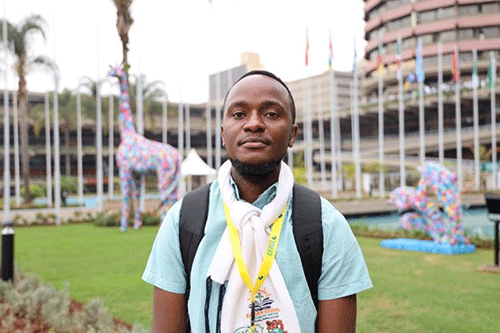Jasper D. Kassoma
The world united in 2015 at the UNFCCC Conference of Parties (COP20) in Paris, resulting in the historic Paris agreement aimed at limiting global warming at 1.5 °C above pre-industrial levels.
As Namibia faces the impending effects of climate change, understanding the implications of this cap on a local level becomes crucial for our nation’s sustainable future. Climate action trackers, along with the University of Cape Town’s climate modelling and analysis, project that the 1.5 °C threshold could be breached within the next decade, with the 2 °C mark looming in the following decades.
What this means for Namibia is a potential increase in heatwaves by 50 days, a 4% decrease in annual rainfall, and an increase in dry days from two to 12 days.
Namibia’s vulnerability to climate change is already evident, with institutions like the Gobabeb – Namib Research Institute and the Ministry of Works‘s Meteorological Services emphasising that Namibia’s average temperature surpasses the global average above pre-industrial levels. This has immediate and far-reaching impacts on vital resources such as water, biodiversity, health, agriculture and overall livelihoods.
In the face of these projections, Namibia, as a semi-arid country, anticipates a 33% decrease in groundwater recharge rates, a 19% decline in surface runoff, and a 10% increase in evapotranspiration rates. The implications for water scarcity are profound, particularly given that 80% of the population depends on groundwater.
This poses a significant challenge for rural Namibians, who already struggle with limited water access, leading to an inevitable rise in water prices.
Agriculture, the backbone of Namibia’s economy, is not exempt from the climate crises. With the challenging climatic conditions, cereal crops and livestock productivity are estimated to drop by 5%, while species loss is predicted to increase by 30%. The ripple-effect extends to job losses in sectors such as agriculture, tourism and related industries. Adapting to the changing climate is not a distant prospect, but an immediate necessity. While the scientific community grapples with explaining the complexities to the public, practical steps can be taken at the local level.
Drawing parallels with the ongoing AFCON tournament, where cooling breaks are becoming more frequent due to rising humidity, Namibia can expect a surge in heatwaves.
In my opinion, I do think that a change in mindset alone is insufficient.
To navigate the climate challenges ahead, Namibia must invest in research tailored to our unique narrative. Empowering farmers, supporting local authorities, and managing natural resources through conservancies are essential steps. The Ministry of Environment, Forestry and Tourism (MEFT) estimates a need for US$4 billion to implement adaptation ambitions, yet current spending falls short of this goal. It is imperative to double adaptation finance in Namibia, focusing on water, agriculture, biodiversity and overall livelihoods.
* Jasper D. Kassoma is a conveyer of the Pan- African Climate Justice Alliance (PACJA) Namibia Chapter, and a candidate of Environmental Studies at a local university. Holds a BSc in Physics and Biology, and various trainings on climate justice by the UNDP, PACJA and Kenyatta University. Reach him at jasperkassoma@gmail.com.



